Links digest, 2023-11-24
Bottlenecks of aging, Starship launches, and much more
by Jason Crawford · November 24, 2023 · 15 min read
I swear I will get back to doing these weekly so they’re not so damn long. As always, feel free to skim and skip around!
The Progress Forum
- A paradox at the heart of American bureaucracy: “The quickest way to doom a project to be over-budget and long-delayed is to make it an urgent public priority”
- Why Governments Can’t be Trusted to Protect the Long-run Future: “No one in the long-run future gets to vote in the next election. No one in government today will gain anything if they make the world better 50 years from now or lose anything if they make it worse”
- What if we split the US into city-states? “In The Republic, when his entourage asks the ideal size of a state, Socrates replies, ‘I would allow the state to increase so far as is consistent with unity; that, I think, is the proper limit’”
- The Art of Medical Progress: “These two paintings offer a hopeful contrast. Whereas we begin with pain and suffering, we move to hope and progress. The surgeon stands apart as a hero, a symbol of the triumphant conquering of nature by humanity”
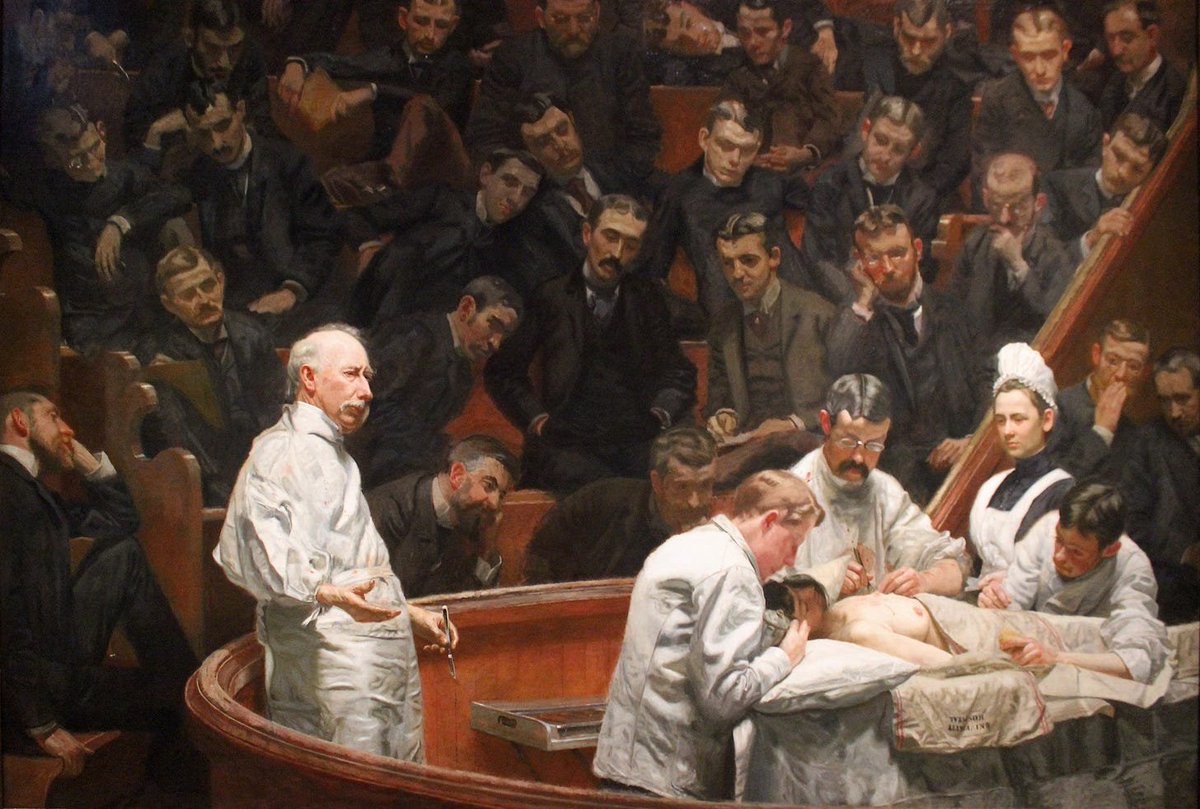
More from Roots of Progress fellows
- Bottlenecks of Aging, a “philanthropic menu” of initiatives that “could meaningfully accelerate the advancement of aging science and other life-extending technologies.” Fellows Alex Telford and Raiany Romanni both contributed to this (via @jamesfickel)
- Drought is a policy choice: “California has surrendered to drought, presupposing that with climate change water shortages are inevitable. In response, the state fallows millions of farmland each year. But this is ignorant of California’s history of taming arid lands”
- Geoengineering Now! “Solar geoengineering can offset every degree of anthropogenic temperature rise for single-digit billions of dollars” (by @MTabarrok)
- A conversation with Richard Bruns on indoor air quality (and some very feasible ways to improve it) (@finmoorhouse)
- To Become a World-Class Chipmaker, the United States Might Need Help (NYT) covers a recent immigration proposal co-authored by (@cojobrien). Also, thread from @cojobrien of “what I’ve written through this program and some of my favorite pieces from other ROP colleagues”
Opportunities
Job opportunities
- Forest Neurotech is hiring, “one of the coolest projects in the world” says @elidourado
- “Know someone who loves to scale and automate workflows in the lab? We want to apply new tools to onboard a diverse array of species in the lab!” (@seemaychou)
- The Navigation Fund (new philanthropic foundation) is hiring an Open Science Program Officer (via @seemaychou, @AGamick)
- ARIA Research (UK) is hiring for various roles (@davidad)
Fundraising/investing opportunities
- Nat Friedman is “interested in funding early stage startups building evals for AI capabilities”
- A curated deal flow network for deep tech startups: “We’re looking for A+ deep tech operator-angels. E.g. founders & CxOs at $1b+ deep tech companies, past and present. Robotics, biotech, defense, etc. Who should we talk to?” (@lpolovets)
Policy opportunities
- “In 2024 I will be putting together a nuclear power working group for NYC/NYS. If you understand the government (or want to learn), want to act productively, and want to look at nuclear policy in the state, this is for you!” (@danielgolliher)
Gene editing opportunities
- “I’m tired of waiting forever for a cure for red-green colorblindness. Reply to this tweet if you’d be willing to travel to an offshore location to receive unapproved (but obviously safe) gene therapy to fix it. If I get enough takers I’ll find us a mad scientist to administer the therapy. This has already been done in monkeys (14 years ago) using human genes and a viral vector that is already used in eyes in humans.” (@elidourado)
Events
- Foresight Vision Weekend USA is coming up soon (Dec 1–3) in SF; I’m speaking (via @foresightinst)
Obituaries
- “The world has lost another Apollo era legend. Ken Mattingly, the Apollo 16 and Shuttle astronaut left us on October 31. Ken’s contributions to the field of spaceflight were nothing short of extraordinary” (@ArmstrongSpace). “Every time we lose one of the Apollo astronauts, I think of this chart from @xkcd” (@Robotbeat):
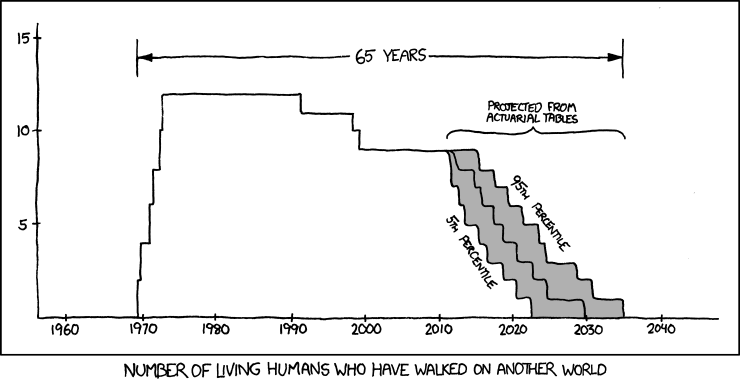
- Bill Powell of SUNY-ESF has died at 67. “He will be remembered as the father of the genetically modified American Chestnut tree that many (including me) hope will restore Eastern North American forest” (@HankGreelyLSJU)
News & announcements
Starship launches


New ventures
- Future House is “a philanthropically-funded moonshot focused on building an AI Scientist.” They’re hiring. (via @SGRodriques)
- Antares is “building micro-sized nuclear reactors to provide power to remote off-grid locations,” with a vision of “abundant clean energy for all, from Earth to the asteroid belt” (via @juliadewahl)
- Valar Atomics aims “to make energy 10x cheaper in 10 years by pulling oil and gas out of thin air with nuclear fission” (@isaiah_p_taylor)
New books
- The Geek Way, by Andy McAfee (author of More from Less) is about “a new and better way to get big things done” (via @amcafee)
- New book in the works from Ed Yong: The Infinite Extent, “about how animals, plants, microbes, and other forms of life thrive at the edges of space and time, geography and longevity, connectivity and identity”
Other new publications
- The Latecomer, a new magazine with some good authors, looks interesting. First issue includes “We Will Build Our Way Out of the Climate Crisis” by Casey Handmer
- Possibilia, “a literary magazine that publishes optimistic, realistic, scientific fiction” (via @possibiliamag)
- Works In Progress Issue 13 (via @WorksInProgMag)
- Hot Rocks: Commercializing Next-Generation Geothermal Energy, a joint project of Employ America and IFP (via @ArnabDatta321)
Bio news
- The first approved CRISPR medicine in the world for sickle cell disease and beta thalassemia! “A huge victory for biotechnology, patients, and humanity” (@pdhsu)
- UK Biobank genetics database wins donations of $10M each from Eric Schmidt and Ken Griffin (via @JimPethokoukis)
Nuclear news
- The US will lead a pledge to triple global nuclear power capacity by 2050 at COP28. “Declaration will call on the World Bank & other financial institutions to include nuclear in lending policies… UK, France, Sweden, Finland, Korea to join pledge” (via @SStapczynski)
- Illinois governor says he will sign a new bill lifting ban on the construction of new nuclear reactors (via @W_Nuclear_News)
Housing news
- “Milwaukee, Wisconsin just proposed the most ambitious zoning code in the US: all residential parking mandates gone; small apartment buildings legal by right in core; triplexes, townhomes, & ADUs legal by right citywide; permitting fast-tracked” (@JacoMajor)
- “A new 71 story residential building application for SoMa in 2023 … because of AB 2011, these 672 new homes can be built without having to be approved by the Board of Supervisors & don’t have to go through CEQA” (@pitdesi)
AI
AI leadership announcements
- There was a whole big thing about OpenAI. Too much to summarize, sorry. I assume you already read about it, and if not, every other tech blog in the world has a roundup/commentary
- Kyle Vogt has resigned as CEO of Cruise
AI product announcements
- DeepMind’s GraphCast is “the most accurate 10-day global weather forecasting system in the world. GraphCast can also offer earlier warnings of extreme weather events, including the path of hurricanes” (via @demishassabis)
- Lyria, also from DeepMind. The most impressive generative AI music I have seen yet. Hum a few bars, or type in a description, and get a fully orchestrated track. Skip the marketing video and just watch the example videos that are < 1 minute each
- Synthesis shows off a personal AI tutor
- “GPTs are a new way for anyone to create a tailored version of ChatGPT to be more helpful in their daily life, at specific tasks, at work, or at home—and then share that creation with others. No code required” (@OpenAI)
- E.g., FOIA GPT: “write FOIA document drafts with code interpreter; strategize and assist replies to get appeals” (via @micksabox)
- Grok, from X.ai (via @elonmusk)
AI predictions
- Cambridge student: “To get to AGI, can we just keep min maxing language models, or is there another breakthrough that we haven’t really found yet to get to AGI?” Sam Altman: “We need another breakthrough. We can still push on large language models quite a lot, and we will do that. We can take the hill that we’re on and keep climbing it, and the peak of that is still pretty far away. But, within reason, I don’t think that doing that will (get us to) AGI. If (for example) super intelligence can’t discover novel physics I don’t think it’s a superintelligence. And teaching it to clone the behavior of humans and human text—I don’t think that’s going to get there. And so there’s this question which has been debated in the field for a long time: what do we have to do in addition to a language model to make a system that can go discover new physics?” (via @burny_tech)
- “AI, like every other tool since fire, will increase human productivity. It will only ‘destroy all jobs’ in the sense that it will reduce the need and demand for very low productivity work, just like fire reduced the demand for shivering through the night or digesting uncooked meat. Our current tool set has destroyed the job market for children, and for the very old even as it has greatly increased the numbers of humans of all ages. This is usually regarded as a good thing, indeed raising the retirement age (increasing labor supply, forcing old people to work) is not politically popular, even as demographic trends place ever greater productivity demands on younger workers. AI enabled productivity increases are desperately needed!” (@CJHandmer)
- “In ~five years we’ll have a thriving industry of LMO: Language Model Optimization, by analogy with SEO. When someone asks their chatbot to make dinner reservations, how do you make sure your restaurant gets suggested? Ditto for product recommendations, trip planning, etc….” (me)
- “I predict that some of my grandchildren will never learn to drive and their kids won’t be allowed to drive.” From: Autonomous Vehicles Lower Insurance Costs (by @ATabarrok)
AI safety
- Mathematics and modelling are the keys we need to safely unlock transformative AI: on “opportunities to combine LLMs with formal methods and mathematical modelling to verify cyber-physical AI systems, ultimately aiming to enabling globally transformative AI with provable safety” (by @davidad)
- Kevin Esvelt ran a hackathon where participants playing “compulsively honest bioterrorists” asked two different LLMs how to obtain 1918 influenza virus, to see how robust safeguards are. One model “happily walked some participants almost all the way through the process.” Will releasing the weights of future large language models grant widespread access to pandemic agents? (via @kesvelt)
AI regulation
- Biden Administration releases an executive order on AI (via @deliprao)
- The key reporting requirement applies to “any model trained with ~28M H100 hours, which is around $50M USD, or any cluster with 10^20 FLOPs, which is around 50,000 H100s, which only two companies currently have” (@nearcyan)
- “The EO, in what will probably be the most touted provisions, would regulate AI companies through an unusual and aggressive use of the Defense Production Act, a Korean War era law intended to ensure the government can get materials and products it needs to defend the country. The DPA is usually used to put government orders at the front of the line, and sometimes to issue loans to enable a company to complete government orders on time. Yet here the White House would use it to require certain procedures (notification of training and reporting the results of red teaming tests) by companies before they release products to the public. That type of regulation is Congress’s job, and any legally sustainable path will require Congressional action.”(@neil_chilson)
- Eric Schmidt also has a “proposal for a start for AI investment and regulation” (via @ericschmidt)
- “I don’t know what the right approach to regulating AI is, but one problem with this particular approach is that it means we’re heading toward the government regulating private individuals’ computing at an exponential rate.” (@paulg)
- “Lord, grant me the confidence of Bruce Reed, who spearheaded the White House Executive Order on AI… ‘And who wants to work on tech policy if you actually have to understand how these microscopic things work?’” (@WillRinehart)
- “We’re being asked to stop a major technology based on pseudo-science.” (I take safety issues seriously, but this line sums up what I think about calls to “slow” or “pause” AI development)
Podcasts
- Age of Miracles Episode 5, on advanced nuclear reactor startups
Articles and other links
- The ARPA Playbook, a new series of articles from @eric_is_weird
- Outdoing the Ancients: “When was the Ancient World surpassed technologically? The surprising view from 1599 and from 1715” (by @antonhowes)
- Robert Boyle’s scientific to-do list from the 1600s: “A perpetuall light; The making of glass malleable; A ship to saile with all winds; The art of flying.” “Guys we have done so well” (@SGRodriques)
- “Growing the growth coalition” is “one of the most important articles ever written for understanding why we are failing to deliver sufficient housing & how to fix the problem” (@bswud)
- Icebox is a science-sharing strategy designed to encourage risk-taking. “Our ‘icebox’ is where we share the projects that we’ve decided not to continue.” (via @seemaychou)
- List of emerging technologies. “Surprisingly interesting… many entire fields I’d never heard of!” (@michael_nielsen) “Let’s go! 1. None of these is inevitable—it takes a lot of work to turn them into a real thing that can improve lives. 2. There are so many possibilities that are not on this list. Many of these things were not even imaginable a hundred years ago.” (@Ben_Reinhardt)
- “The Greeks honored Prometheus. They celebrated technē. They appreciated the gifts of civilization… The ancient myth of Prometheus is not a cautionary tale. It is a reminder that technē raises human beings above brutes. It is a myth founded in gratitude.” (Virginia Postrel)
- “New York City used to process up to 10,000 immigrants a day at Ellis Island alone. Now a government larger, wealthier, and with more resources is claiming that 10,000 a month is impossible to bear” (by @JerusalemDemsas). (“I would simply legalize building things in the places where the demand is high,” says @mattyglesias)
Queries
If you have a helpful answer, please click through and reply:
- “We’re in the middle of interviews for the fusion half of Age of Miracles Season 1…. Which founders, researchers, investors, and even historians in fusion should we talk to?” (@packyM)
- “What is the best movie about manufacturing?” (@grantadever)
- “Did you or someone you know win the ‘genetic lottery’? How so? I want put together a ‘mutantpedia’—an encyclopedia of known human mutants with beneficial genetic traits” (@kanzure)
- “Who are the best accounts to follow for innovation? Innovation management? Innovation research (is this a thing?)” (@andrewfierce)
- “What do AI safety/accelerationist people disagree on that they could bet on? What concrete things are going to happen in the next two years that would prove one party right or wrong?” (@NathanpmYoung)
- “Women’s reproductive health is such an exciting & important area to research, despite many obstacles other fields face to a lesser extent. Who’s currently working in this space?” (@KKajderowicz)
- “Max Weber. A hole in my learning. Where does one start?” (@Scholars_Stage)
- “Do I know anyone with experience automatically segmenting images, especially maps? Where should I start if I want to learn how to do this?” (@MTabarrok)
- “Has anyone with an office included a library that people actually use? Particularly interested in libraries that actually succeed in prompting deep work” (@LauraDeming)
Social media
- Atomically precise NOR gate, cool animation
- “The U.S. spends ~$300 billion a year on fire safety. It’s worth it. Could a similar investment virtually eradicate infectious disease and prevent future pandemics? Perhaps! A key question: how fast can we safely eliminate viruses with germicidal light?” (thread from @kesvelt)
- “Combined cycle plants get built quick. 1100 MW plant going from clearing the site to operational in less than 2 years” (@_brianpotter)
- “How can you leverage nuclear energy to propel vehicles? In 1963, the US Army knew direct nuclear plants would be too heavy for normal vehicles, and very large vehicles would have ‘serious tactical disadvantages.’ And so the Army focused on ‘the energy depot’ concept, where a nuclear reactor and associated equipment would be used to manufacture chemical fuels from elements universally available in air and water.” (thread from @whatisnuclear with pics and more)
- Oxford was founded before the First Crusade. Cambridge before the Magna Carta. Harvard is older than Louis XIV. Universities are some of our most long-lived institutions. They have survived the rise and fall of empires. They are extremely resilient and resistant to change. (me on Threads, Twitter)
- Dog power in 1640s Belgium: “I met with diverse little waggons, prettily contrived, and full of peddling merchandises, drawn by mastiff-dogs, harnessed completely like so many coach horses; in some four, in others six, as in Brussels itself I had observed.” (@antonhowes)
- City parks as a 19th-century invention
- “Everybody wants metrics, explanations of how things will change the world, market sizes, etc. Those are fine, but my heuristic is ‘does this feel like magic that humanity has forged from the hands of nature?’” (@Ben_Reinhardt)
- “Just saw a ‘why do we teach students calculus in high school? I never use it’ tweet. I have so little sympathy. Calculus has so many applications and is used by many fields. Also don’t we just want to teach students some of the most important knowledge people have acquired?” (@itaisher)
- “This is very laudable (from a striking profile of Katalin Kariko), an individual postmortem on a likely error. But no sign of an institutional postmorterm by Penn or NIH” (@michael_nielsen)
- The Housing Theory of Everything strikes again
- “The decline in public R&D can explain around a third of the decline in TFP growth in the US from 1950 to 2018” (@ArnaudDyevre via @calebwatney)
- “I will never understand why the debate over perpetual growth is so prominent. It really doesn’t matter if we will forever get richer, only if we can get sustainably richer than at the current moment. And it’s clear that we haven’t exhausted growth possibilities” (@tribsantos)
- “I never know what to make of the doomers who are freaking out over rising sea levels in 2100, etc. Are they seriously suggesting we can’t handle what our much poorer ancestors did with much more primitive tech?” (@Marian_L_Tupy)
- “Wealth is good. Prosperity is wholesome. If you are privileged what you should feel is gratitude, not shame, and you should be thinking of how you can employ and pass on this prosperity.” (@simonsarris)
- Books matter
- “Chatmogorov complexity”: the length of the shortest ChatGPT prompt that can generate a given piece of text
- Tired: thinking about the Roman Empire every day. Wired: thinking about calculus every minute
- “You can just search made-up sci-fi sounding words like ‘Plasma Rail Gun’ and half the time you end up on some ARPA-E slide deck reviving the concept from the 1970s” (@Andercot)
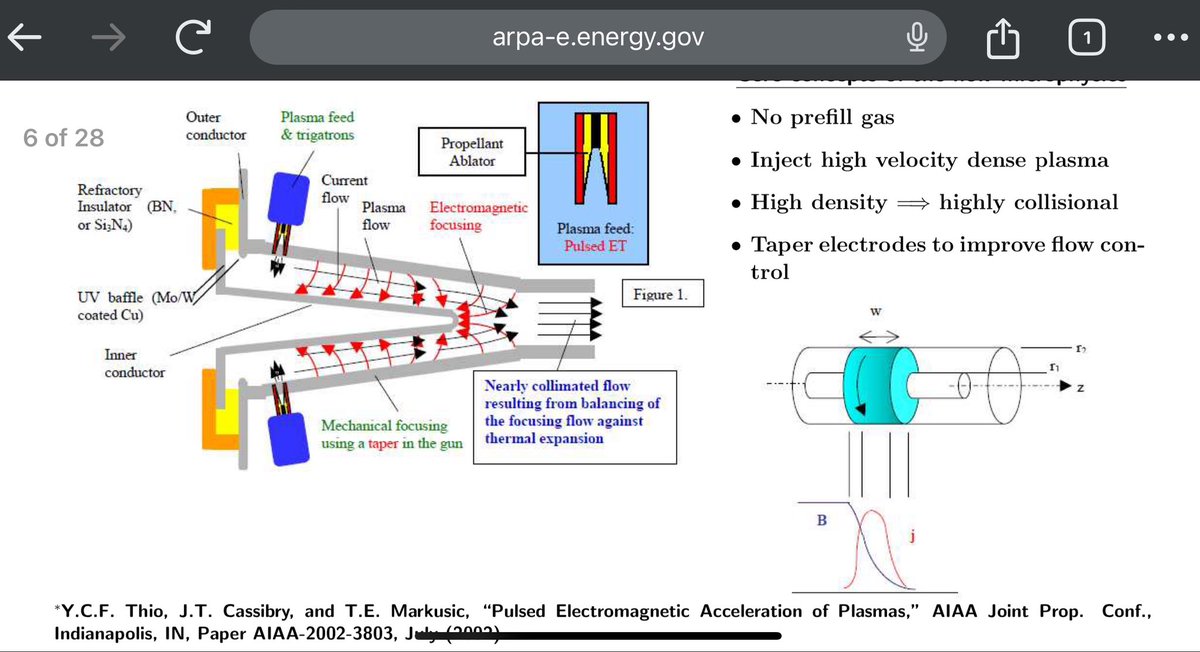
Quotes
“Before Kendall Square was a leading biotech hub, it was a leading manufacturing hub” (@Atelfo). Robert Buderi, Where Futures Converge:
Within an area of two square miles of Kendall Square, where the greatest manufacturing development has taken place, are located more than 200 plants, whose invested capital exceeds $100,000,000. Here the searcher of facts finds the homes of the largest manufacturer of soap in the world; the greatest producer of rubber clothing in the world; the largest manufacturer of mechanical rubber goods in the world; the largest plant in the world devoted exclusively to the printing of school and college textbooks; the greatest producer of writing inks, adhesives, carbon papers, and typewriter ribbons in the world; the largest plant in the world devoted exclusively to the manufacturer of confectionery; a branch plant of the largest manufacturer of optical goods and optical machinery in the world, the largest producer of road paving plants in the world; the oldest and largest school supply house in the United States; the only industrial research laboratory of its kind in the country.
Subrahmanyan Chandrasekhar (via @michael_nielsen)
One story in particular illustrates Chandrasekhar’s devotion to his science and his students. In the 1940s, while he was based at the University’s Yerkes Observatory in Williams Bay, Wis., he drove more than 100 miles round-trip each week to teach a class of just two registered students. Any concern about the cost- effectiveness of such a commitment was erased in 1957, when the entire class—T.D. Lee and C.N. Yang—won the Nobel Prize in physics.
A story via @stewartbrand, who says “That’s the way to run a culture”:
NEW COLLEGE, OXFORD, is of rather late foundation, hence the name. It was founded around the late 14th century. It has, like other colleges, a great dining hall with big oak beams across the top. These might be two feet square and forty-five feet long.
A century ago, so I am told, some busy entomologist went up into the roof of the dining hall with a penknife and poked at the beams and found that they were full of beetles. This was reported to the College Council, who met in some dismay, because they had no idea where they would get beams of that caliber nowadays.
One of the Junior Fellows stuck his neck out and suggested that there might be some oak on College lands. These colleges are endowed with pieces of land scattered across the country. So they called in the College Forester, who of course had not been near the college itself for some years, and asked about oaks. And he pulled his forelock and said, “Well sirs, we was wonderin’ when you’d be askin’.”
Upon further inquiry it was discovered that when the College was founded, a grove of oaks has been planted to replace the beams in the dining hall when they became beetly, because oak beams always become beetly in the end. This plan had been passed down from one Forester to the next for five hundred years. “You don’t cut them oaks. Them’s for the College Hall.”
The combat may have truces but never a peace. If we take the widest and wisest view of a Cause, there is no such thing as a Lost Cause because there is no such thing as a Gained Cause. We fight for lost causes because we know that our defeat and dismay may be the preface to our successors’ victory, though that victory itself will be temporary; we fight rather to keep something alive than in the expectation that anything will triumph.
Charts
“Great graph in the latest Works in Progress headline piece by Hannes Malmberg” (@antonhowes)

Progress in fiber optic transmission (via @varma_ashwin97). I used to think the exponential advancement of Moore’s Law was a unique and amazing phenomenon. Turns out exponential progress is everywhere (and not just in information technology):

“60% of the time it happens 57% of the time. Manifold Markets is pretty well calibrated” (@NathanpmYoung)
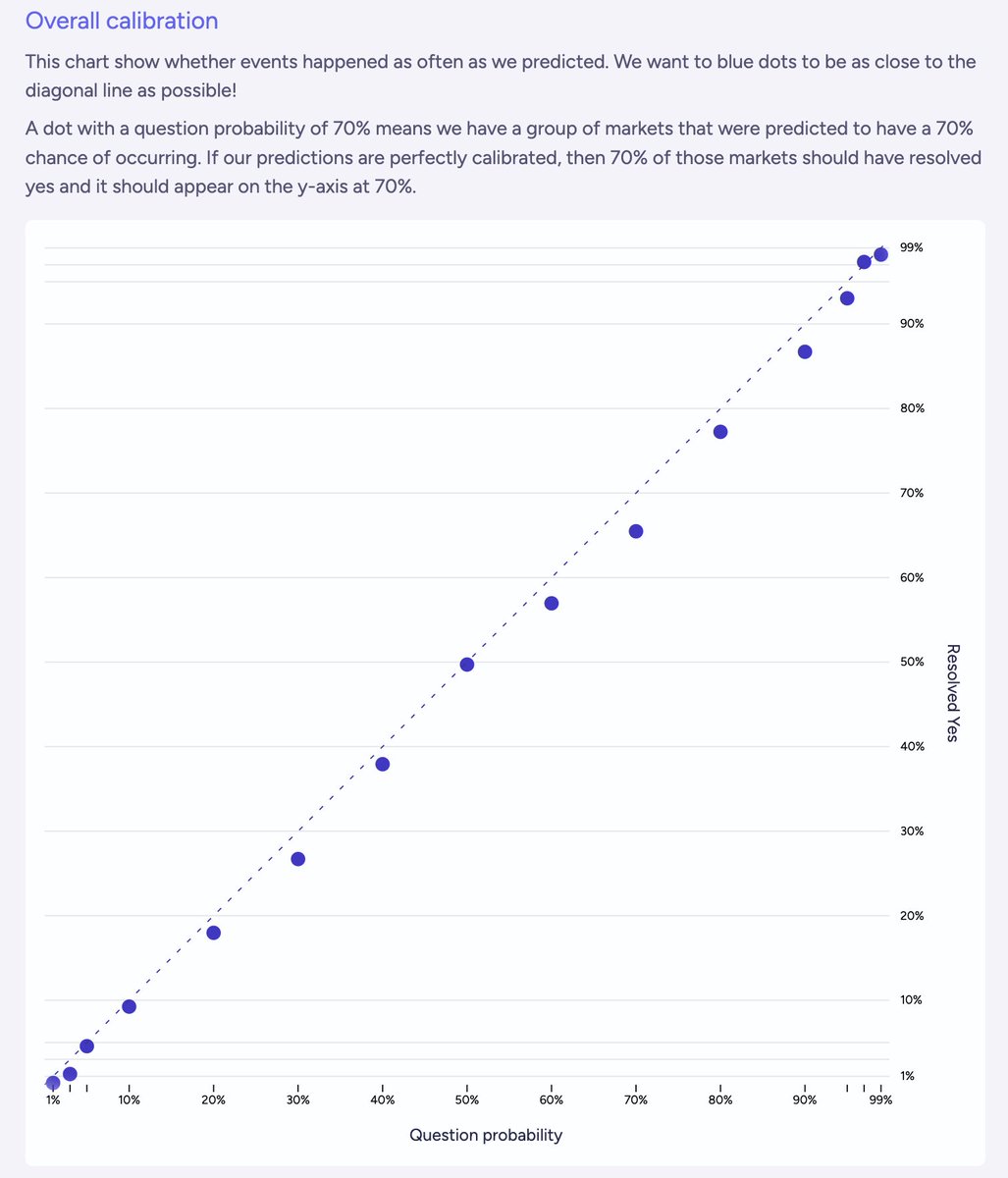
“Good news of the day: We’ve reduced sulfur dioxide pollution by 94% over the last 40 years (and mostly solved the acid rain problem)” (@AlecStapp)
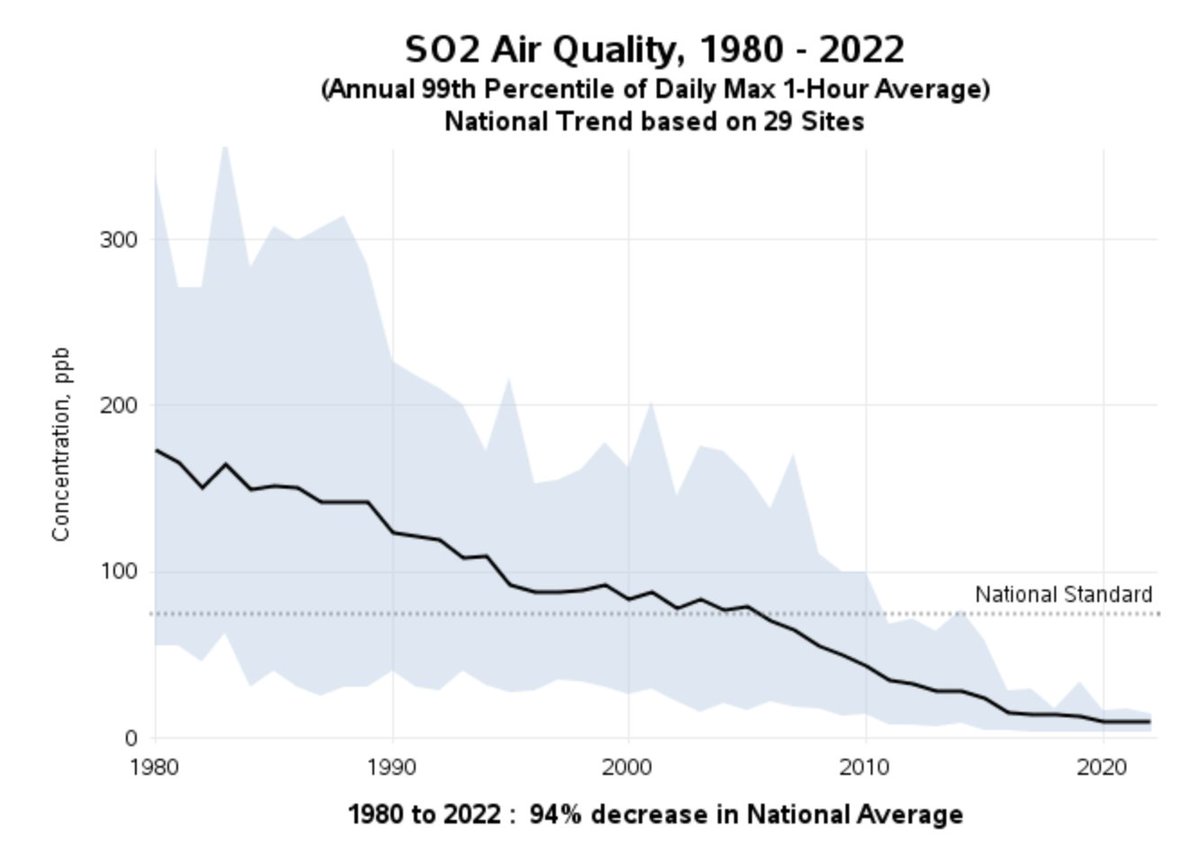
“NEPA environmental reviews just get longer and longer and longer… (this trend is driven by litigation and will not stop without permitting reform)” (@AlecStapp)
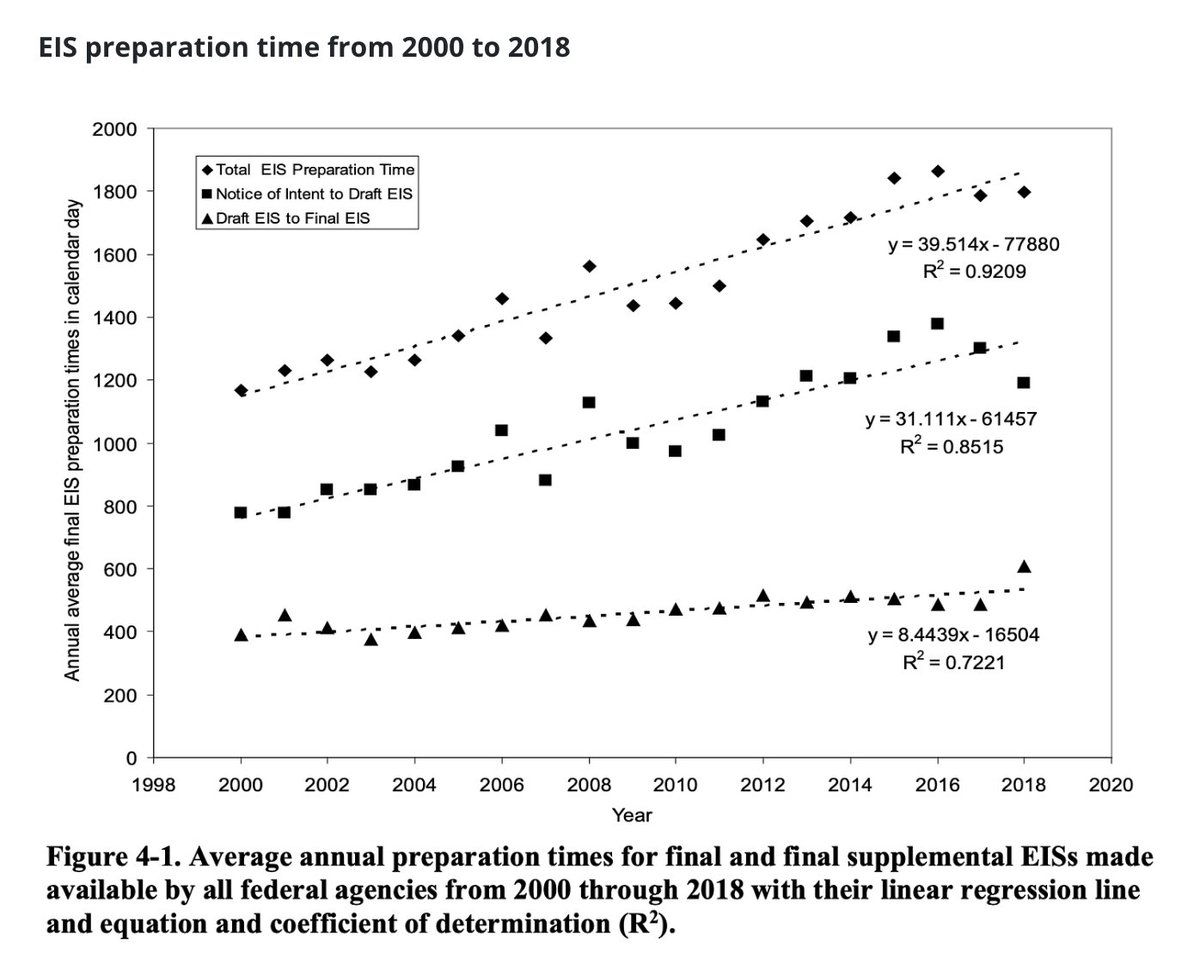
-
@JakeAnbinder adds, from his dissertation: “While in 1972 a member of SF’s planning commission had complained that a 12-page impact statement in his inbox was intolerably verbose, just 4 years later a plan by the Univ of California to build two new dorms resulted in an EIS that ran 950 pages long”
-
@rSanti97 adds: “asymptotically, the NEPA review of the future will be infinite: a legal map the size of the territory, the Aleph in which all things can be seen. it will require more paper than can exist in all possible universes and it will never be completed”
“One society where the suicide rate is highly correlated with the unemployment rate (Japan, red), and one society where it is not at all correlated (Spain, blue)” (@nick_kapur)
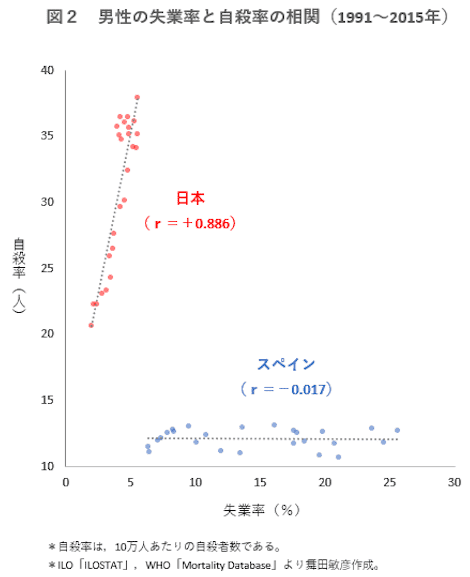
“Where you can drink tap water is a fairly good economic indicator (GDP per capita). It roughly matches up with countries where GDP (PPP) per capita is at least US $22,000” (@pitdesi)
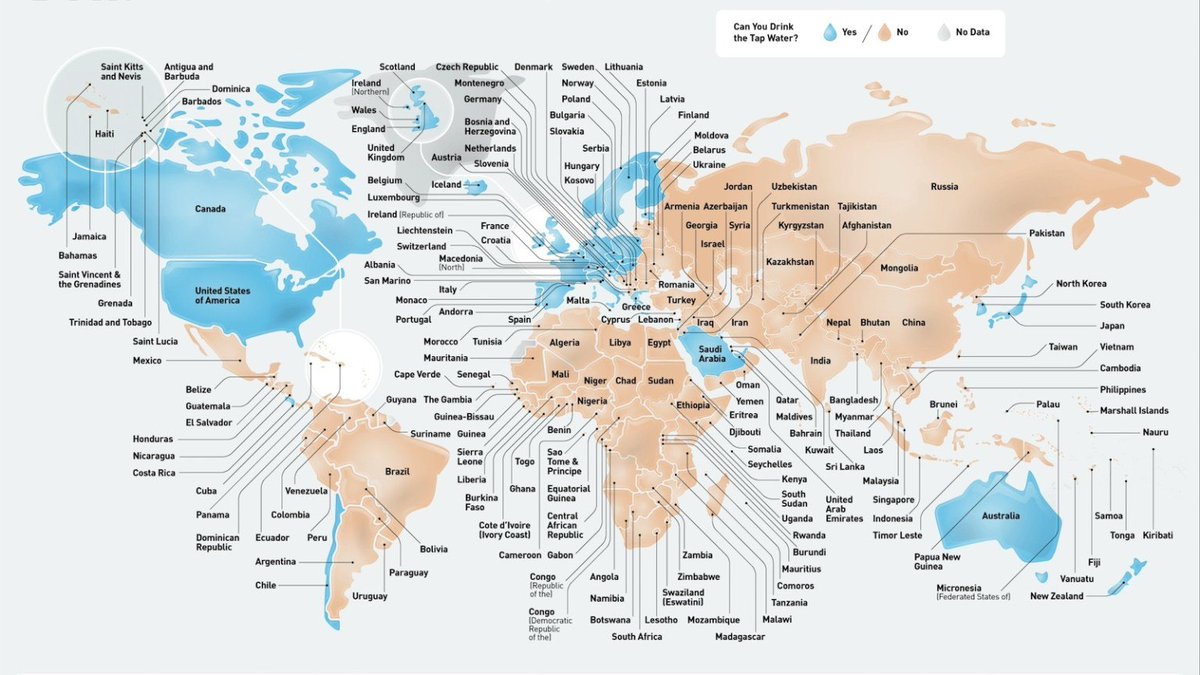
Aesthetics
“Walked by 51st and Madison today to see our work, just installed on the Villard Houses. First addition to the NY landscape” (@mspringut, founder of Monumental Labs)

